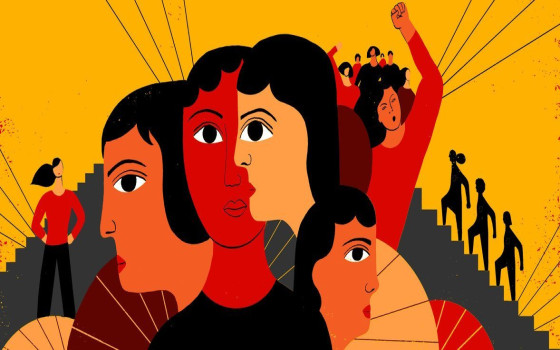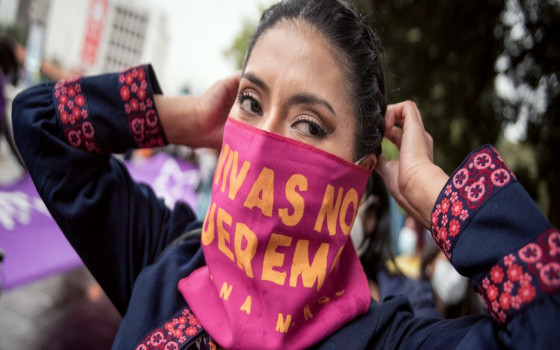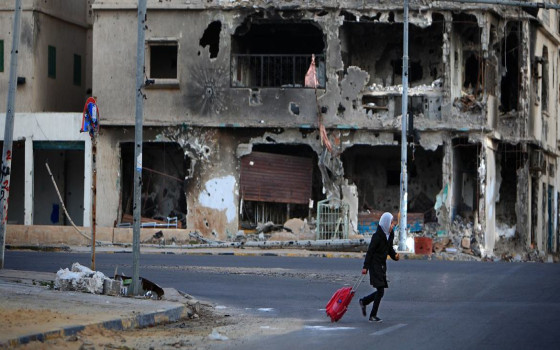
World Health Organization: About 19 million girls were subjected to violence by the other party in the relationship during adolescence

- Europe and Arabs
- Wednesday , 31 July 2024 7:56 AM GMT
New York: Europe and the Arabs
The World Health Organization said that nearly a quarter of adolescent girls who have ever been in a relationship - about 19 million girls - have experienced violence by an intimate partner, by the time they reach the age of 20. According to the daily news bulletin of the United Nations, a copy of which we received this morning, Wednesday
The study - published in the Lancet Child and Adolescent Health Journal - is based on existing data and provides the first detailed examination of the prevalence of physical and/or sexual violence faced by girls aged 15-19 who have been in intimate relationships. The study identified broader social, economic and cultural factors that increase the risk of violence. The organization said that nearly 16 percent of this age group - or one in six - have experienced this type of violence in the past year.
Devastating effects
Dr. Pascale Alloty, Director of the Department of Sexual and Reproductive Health and Research at the World Health Organization, indicated that violence by an intimate partner begins at an alarmingly early age for millions of young women around the world. “Because violence during these critical formative years can cause profound and lasting damage, it needs to be taken more seriously as a public health issue – with a focus on prevention and targeted support,” she said.
The WHO stressed that this type of violence can have devastating health effects, increasing the risk of injury, depression, anxiety disorders, unplanned pregnancy, sexually transmitted infections and many other physical and mental conditions. It can also affect educational attainment, future relationships and life prospects.
Regional disparities
Despite the prevalence of this scourge around the world, the WHO found significant differences in its prevalence rates, saying that the most affected regions are Oceania and Central Sub-Saharan Africa, at 47 per cent and 40 per cent respectively, while the lowest rates are in Central Europe at 10 per cent and Central Asia at 11 per cent.
Moreover, violence against young women by their intimate partners is most common in low-income countries and regions, where fewer girls attend secondary school, and where girls do not have the same legal property and inheritance rights as men.
Child marriage – before a girl turns 18 – also significantly increases the risk, WHO said. Age differences between spouses create power imbalances, economic dependence and social isolation – all of which increase the likelihood of abuse.
Prevention, protection and empowerment
To address this issue, WHO stressed the urgent need to strengthen and support services and early prevention measures targeting adolescent girls. It said this should be accompanied by measures to strengthen the capacities and rights of women and girls, including school-based programmes to educate girls and boys about healthy relationships, protection from violence, legal protection and economic empowerment.
The organization noted that no country is currently on track to eliminate violence against women and girls by 2030, in line with the Sustainable Development Goals.
Therefore, ending child marriage – which affects one in five girls worldwide – and expanding girls’ access to secondary education will be critical to reducing violence against adolescent girls, according to WHO.
Equality and education
The study shows that to end gender-based violence, countries need to put in place policies and programmes that increase equality between women and girls, said Dr Lynn Marie Sardinha, report author and WHO technical officer for gender-based violence data and measurement.
“This means ensuring secondary education for all girls, securing equal property rights between genders, and ending harmful practices such as child marriage, which are often underpinned by the same unfair gender norms that perpetuate violence against women and girls,” she explained.
To this end, WHO is supporting countries to measure and address violence against women, including efforts to strengthen prevention and response within the health care sector. The UN agency also plans to release new guidance on preventing child marriage by the end of the year.












No Comments Found